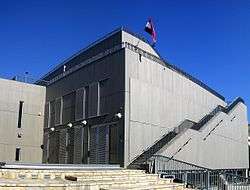Narona
Narona /nəˈroʊnə/ was the name of the ancient Roman city that was located in the Neretva valley in present-day Croatia. It was part of the Roman province of Dalmatia. The city was established after the Illyrian Wars [1] and was located on the alluvial plains, between present day city of Metković and village of Vid. It was founded as a Hellenistic emporium in c. 3rd/2nd century BC, first time mentioned in the chapter 24 of the Periplus of Pseudo-Scylax. Narona became the major Roman stronghold in the 1st century BC.[2] In the 6th century AD, it came under Byzantine rule. The settlement ceased to be in 7th century after the arrival of Slavic tribes in the region.

In 1995 a Roman temple building was discovered, which had been dedicated by the governor Dolabella and contained statues of the emperors Claudius and Vespasian, as well as two of Augustus and his wife Livia. The statues had been vandalized in the 4th century: they were lying on the floor and their heads had been broken off. The heads of Vespasian and one of the Livias had been acquired in the surrounding area by Arthur Evans in 1878. The heads were thus reunited with their bodies. The famous Roman statues have toured major European museums.
See also
References
External links
Coordinates: 43°02′47″N 17°35′55″E / 43.04639°N 17.59861°E